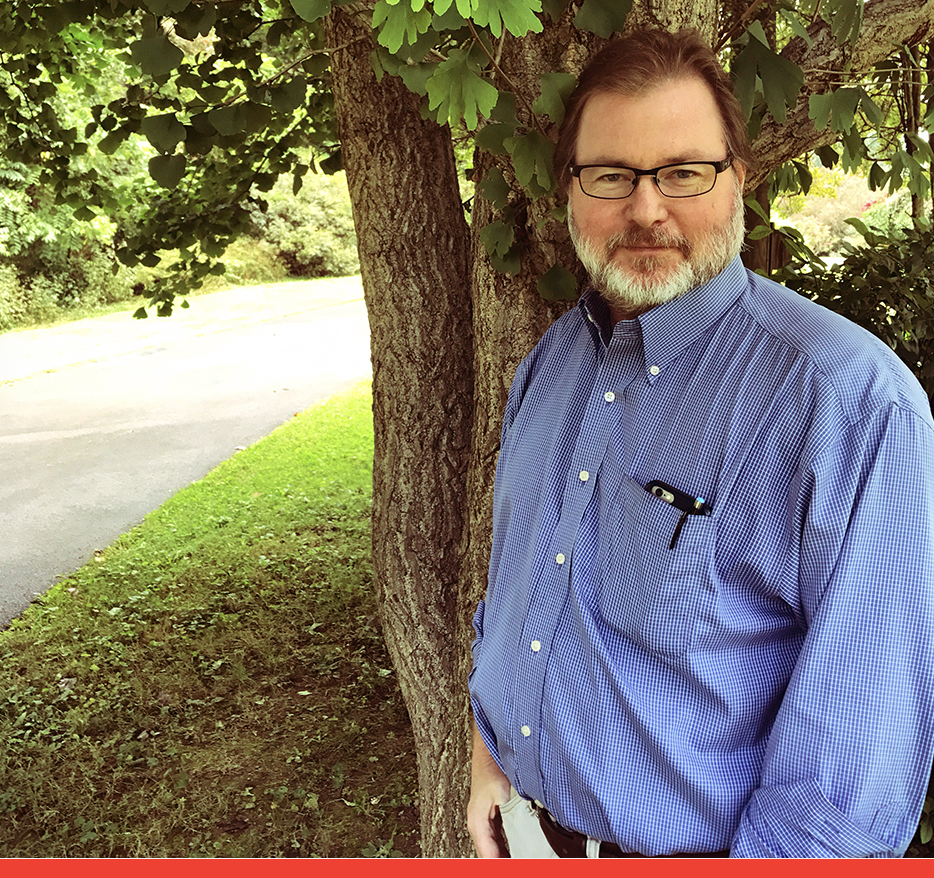Here Today Thanks to Melanoma Research

RUSTY CLINE
Rusty Cline was diagnosed with Stage IV melanoma in 2006, at a time when there were practically no treatments for advanced melanoma. Soon after his diagnosis, Rusty was connected to a melanoma clinical trial. However, he was dismissed from both this and another clinical trial after experiencing recurrences. Despite undergoing radiation, chemotherapy, several surgeries, and being treated with ipilimumab shortly after it received FDA approval in 2011, Mr. Cline’s cancer continued to reoccur.
After the ipilimumab treatment, Rusty recalls feeling like he had exhausted all of his options. With the encouragement of family and a close friend, however, he entered his third clinical trial.
While participating in the trial, Rusty attended the first Leveraged Finance Fights Melanoma (LFMM) event in 2013, where he met MRA founders, Debra and Leon Black, and Jeff Rowbottom, MRA Board Member and (LFMM) Co-Chair. When Rusty was introduced to MRA, he wasn’t sure that he would survive—but he quickly understood that MRA was funding the right research.
Rusty vividly remembers his first email from MRA’s CEO. The email address had cure melanoma in it. Rusty wasn’t hearing other organizations talking about a cure for cancer, especially not for melanoma. But, MRA approached its work differently. It understood that with the right research, we could cure melanoma and it wasn’t afraid to say so. For Rusty, these weren’t just words—they were hope.
“If there’s such a thing as getting melanoma at the right time, I guess I did,” explains Rusty. At the conclusion of this past immunotherapy (nivolumab) trial, Rusty saw a 96% reduction of tumors. “The fact that I was alive at all (after the clinical trial) was a big win.”
/ “The fact that I was alive at all was a big win.” /
/ “The first thing that I love about MRA is 100% of money raised goes to research.” /
Mary Jo Rogers
When Mary Jo Rogers was diagnosed with Stage 3C melanoma in February 2011, a friend put her in touch with Debra Black. She remembers being impressed with the resources on the MRA website, which exposed her to new information about melanoma and possible treatments. After consulting with leading oncologists, Mary Jo entered a clinical trial. However, a year later she learned she was receiving the placebo—and her cancer had metastasized to her lungs. After receiving a Stage IV diagnosis in 2013, Mary Jo was treated with ipilimumab, which was ineffective. Mary Jo turned to Dr. Louise Perkins, MRA’s Chief Science Officer. “I would call her and ask her any type of question. And, she’d answer them. She provided guidance about the best trials.”

That included entering a promising nivolumab trial. Within a year her tumors were eradicated. “I can’t say enough about MRA,” says Mary Jo. “They saved my life. They really did.”
Today, Mary Jo is a member of the MRA Board of Directors, she and her husband have funded a Young Investigator Award, and she serves as a peer-to-peer counselor for people with melanoma.
/“I can’t say enough about MRA.
They saved my life. They really did.” /

JAMIE GOLDFARB
Unlike most cancer patients, Jamie Goldfarb already had knowledge of how clinical trials worked before she needed one. She worked at a company that conducted clinical trial recruitment and her husband led its oncology division. Therefore, Jamie was familiar with developments in melanoma treatment and knew a trial was her best option after being diagnosed with Stage IV melanoma in 2010—just 12 weeks after her baby boy Kai was born. Jamie received this diagnosis approximately four years after receiving a Stage I diagnosis and two years after a recurrence near her primary tumor, which a PET scan and clear margins indicated was contained.
Jamie immediately researched her options and consulted melanoma experts to determine the best trial to enroll in. The experts unanimously suggested she join the National Cancer Institute Tumor Infiltrating Lymphocytes (TIL) trial. Learning that she was eligible for the trial gave Jamie hope.
From January to April 2011, Jamie received high-dose IL-2 as a stand-alone treatment while the National Cancer Institute grew her cells—a step in the preparation of TIL treatment. The IL-2 shrank some tumors, but August scans showed 35 new subcutaneous tumors throughout her body. In September 2011, Jamie began receiving TIL treatment. Wondrously, by October 2013 her scans showed no evidence of disease.
While participating in the trial, Jamie documented her experience via blog in order to raise awareness about clinical trials. It was during this time that she learned how infrequently physicians were telling their patients about clinical trials. In conversations with people she met at the National Cancer Institute and through her blog, she learned many oncologists were prescribing approved treatments and telling their patients, “I’m sorry there’s nothing left for you. You have months left to live. Get your affairs in order.” She also learned, many patients, like herself, didn’t accept their prognosis and began researching options on their own. However, unlike Jamie, most had difficulty interpreting clinical trial information and understanding just what to do with the information. Jamie made sharing information about the importance of oncology clinical trials a personal mission. Today, Jamie is involved with MRA and other melanoma advocacy groups. She also serves as a research advocate at the National Cancer Institute, working with patients to help them navigate their treatment options.
/ “MRA is the one organization that is aligning all the proper stakeholders that are fighting this disease in a way that fosters collaboration, fosters new and better research, fosters better avenues for patients and really makes a mindful effort to involve physicians, advocacy groups, and patients to get the right voices together at all times.” /
